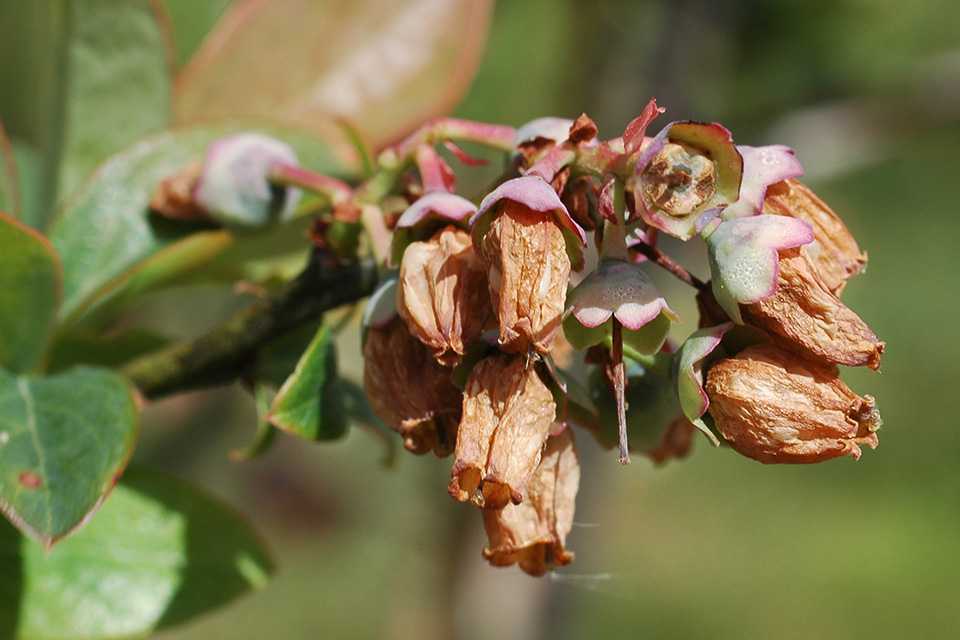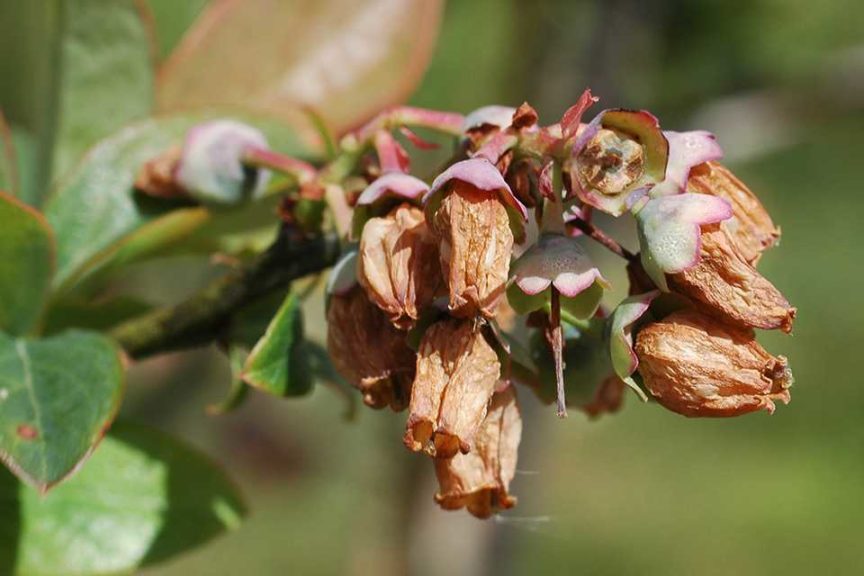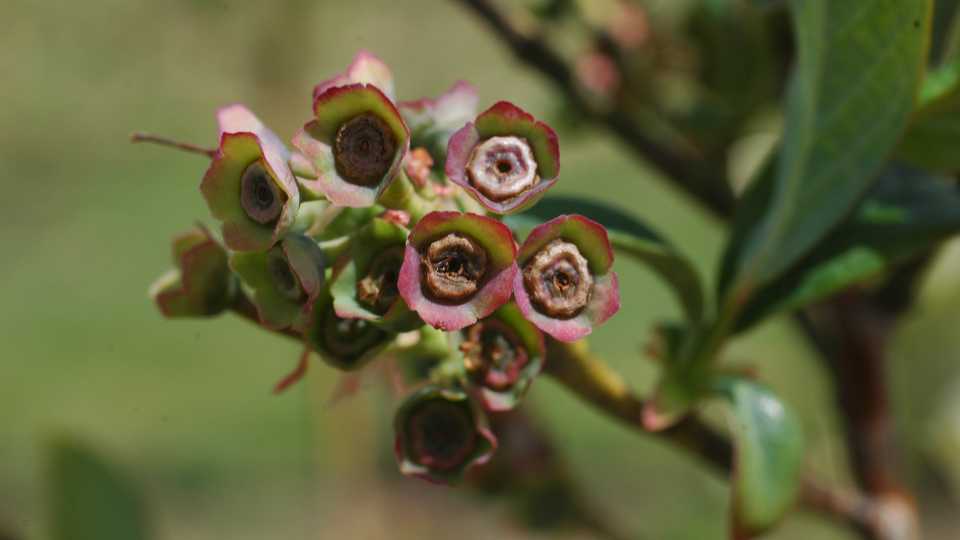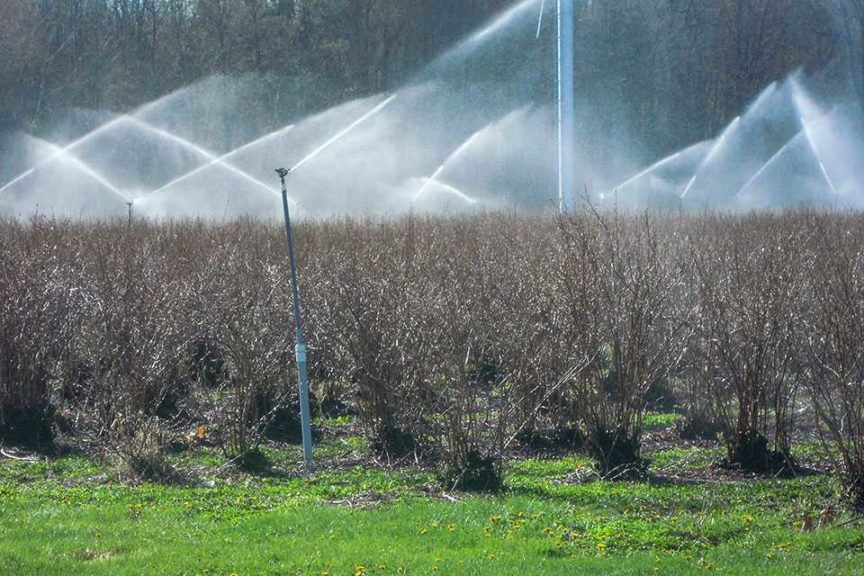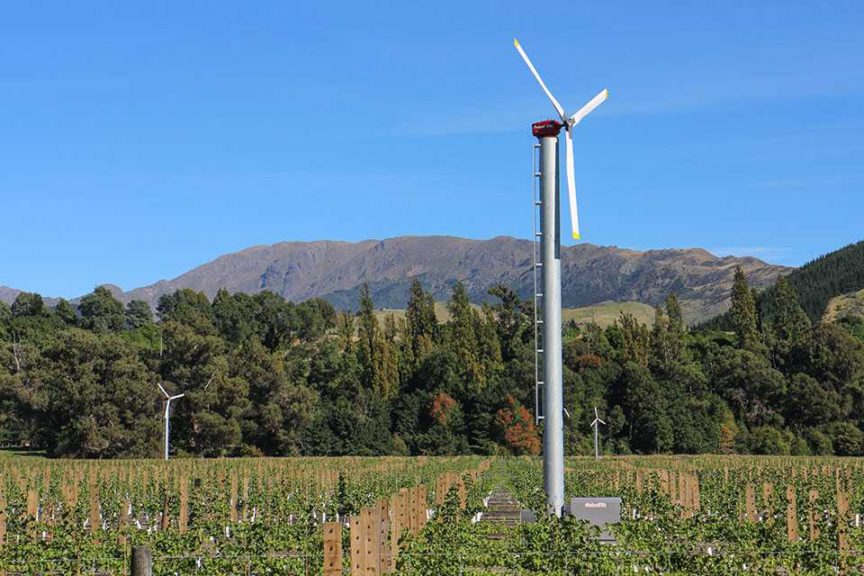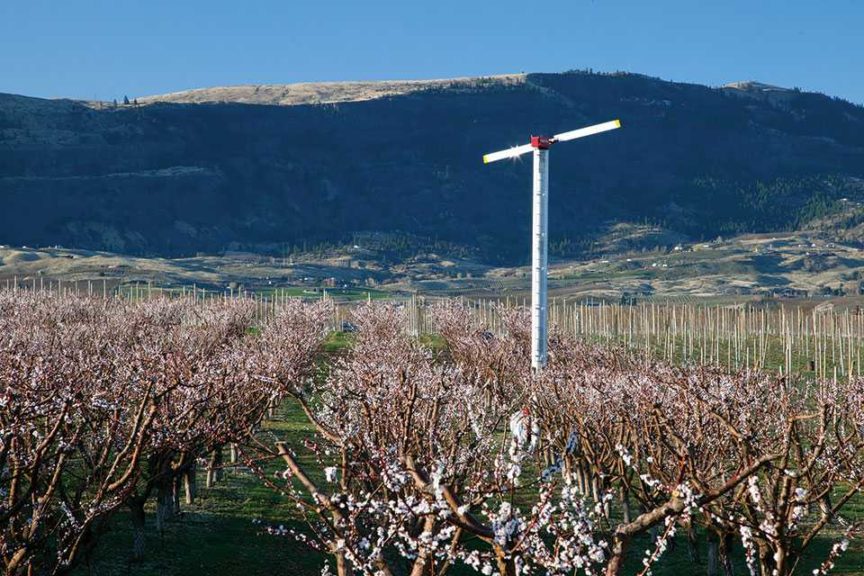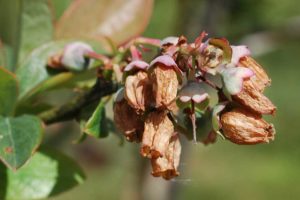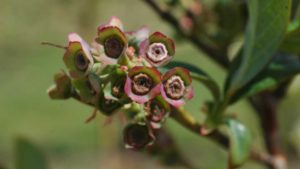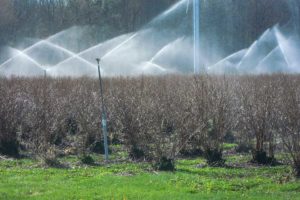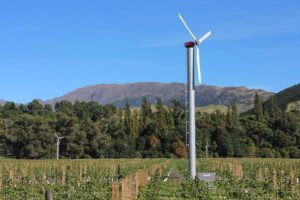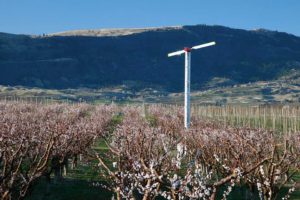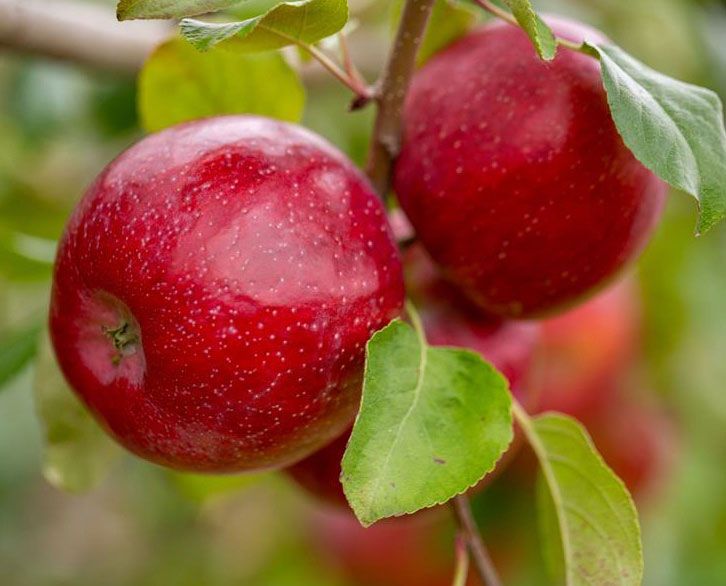Active Frost and Freeze Protection for Berry Crops
I have seen a few frost and freeze events during my career. Unfortunately, these extreme weather events seem to be growing in frequency. It is disheartening to see the frost/freeze-injured flowers and subsequent fruit yield reduction, or even a total loss of fruits.
As you may know, there are active and passive measures for frost and freeze control. I will focus on the active frost/freeze measures here. Keep in mind there is not a one-size-fits-all recommendation since each frost or freeze event is different. You are encouraged to check with your local Extension professional for advice because effective control measures are dependent on many different factors.
DIFFERENT TYPES OF FROST
A hoarfrost is a deposit of interlocking ice crystals (hoar crystals) formed by direct deposition on objects, usually those of small diameter freely exposed to the air, such as tree branches, plant stems, and leaf edges, wires, poles, etc.
A black frost is a dry freeze with respect to its effects upon vegetation; that is, the internal freezing of vegetation unaccompanied by the protective formation of hoarfrost. Freeze occurs when water between plant cells freezes. A frost can become a freeze event when the air temperatures are low enough and the duration of the event is long enough. Freeze injury occurs when ice crystals form inside the plants, causing irreversible damage to plants. A frost event can be radiation frost, which is a net energy loss through radiation from the surface to the sky, or advection frost, which is wind blowing in subfreezing air to replace warmer air. To make the things even worse, sometimes you may get both.
For frost/freeze or control measures, I reached out to my good friend, Mark Longstroth, a longtime Extension educator with Michigan State University who has seen more frost/freeze events than I have. Being a very philosophical guy, he says, “Choice of a freeze protection method depends a lot on situation and means. I like to say that no freeze protection system is perfect, and all will fail when used at the wrong time or the wrong way. They all work best in some situations and not at all during others. The only foolproof freeze protection system is to raise the crop inside, where you can heat it.”
What are some of the important active control measures for frost and freeze control? The first active control method is the use of sprinklers. Longstroth says, “Ice encasement using overhead sprinklers works well if you have access to lots of water. It works well when you only need to protect down to about 25˚F just before, during, and after bloom. This is probably the best system for strawberries since the flowers are so close to the cold ground. Hard to pump any heat down there.”
The key to this approach is that you need to turn on the system the night before. The temperature to start the system is from 34˚F (dew point: 26˚F) to 39˚F (dew points 15˚F to 16˚F) based on dew points. It is important to keep the system on all night and well into the next day until ice starts melting.
A second active control method is the use of wind machines, and there are several types. Orchard-Rite lists stationary and portable ones, a laydown model, and a noise-reducing model. Heidi Burmeister, the Marketing Director with Orchard-Rite, says “Spring frost or winter freezes are a threat to crops around the world. Orchard-Rite wind machines can protect any crop, in any location, regardless of the conditions. Stone fruit like apricots, peaches, and cherries thrive under the constant protection of wind machines. Vulnerable tea leaves and fickle grapes reach full maturity when you use Orchard-Rite wind machines to work ‘with’ Mother Nature. Even exotic tropical fruit, like avocados and kiwis, are susceptible to frost damage. Our wind machines are there to protect any crop. You never have to worry about your harvest again, even on the coldest nights, because our wind machines are there for you 24/7.”
Wind machines can be used any time you need to raise the temperature a few degrees to prevent damage to the crop. Growers used to avoid them because they were expensive and did not work all the time. But they work often enough to pay for themselves over the years.
They have become more common especially in our high-value high-density apple orchards. They can be set to turn themselves on and text the grower to alert him that 2 of 3 of his machines are running, and he might want to check the third to see why. Temperature sensors are usually located at or near the base of the tower to turn them on. I have one grower who has sensors at the top and bottom of the tower, and 5 to 8 degrees difference are common for good strong inversions.”
The third active method is the use of heaters using wood, hay, gas, or oil as the source of fuel. They may help some. However, they have their limitations. One number I saw online is 40 to 60 heaters per acre. It is also better to use heaters in conjunction with other methods. You will need to check with your local official to see if these heaters or smudge pots are permitted in your area. I can see a major problem on the West Coast, where wildfires are already a big problem.
A fourth active method is the use of frost fans. More growers are installing them now. You will need to do your homework on them since they have their pros and cons.
A fifth method is the use of helicopters. I did see that it can cost an average of $1,600 an hour to rent a helicopter. Yikes!
These measures can bail you out when cold temperatures hit your fruit plantings, especially when there is a radiation frost. And these investments may just pay for themselves.
Keep in mind that Mother Nature can practice “tough love.” Our best efforts may come up short sometimes. Well, we can always try a passive method by moving to an area without any frosts or freezes.





